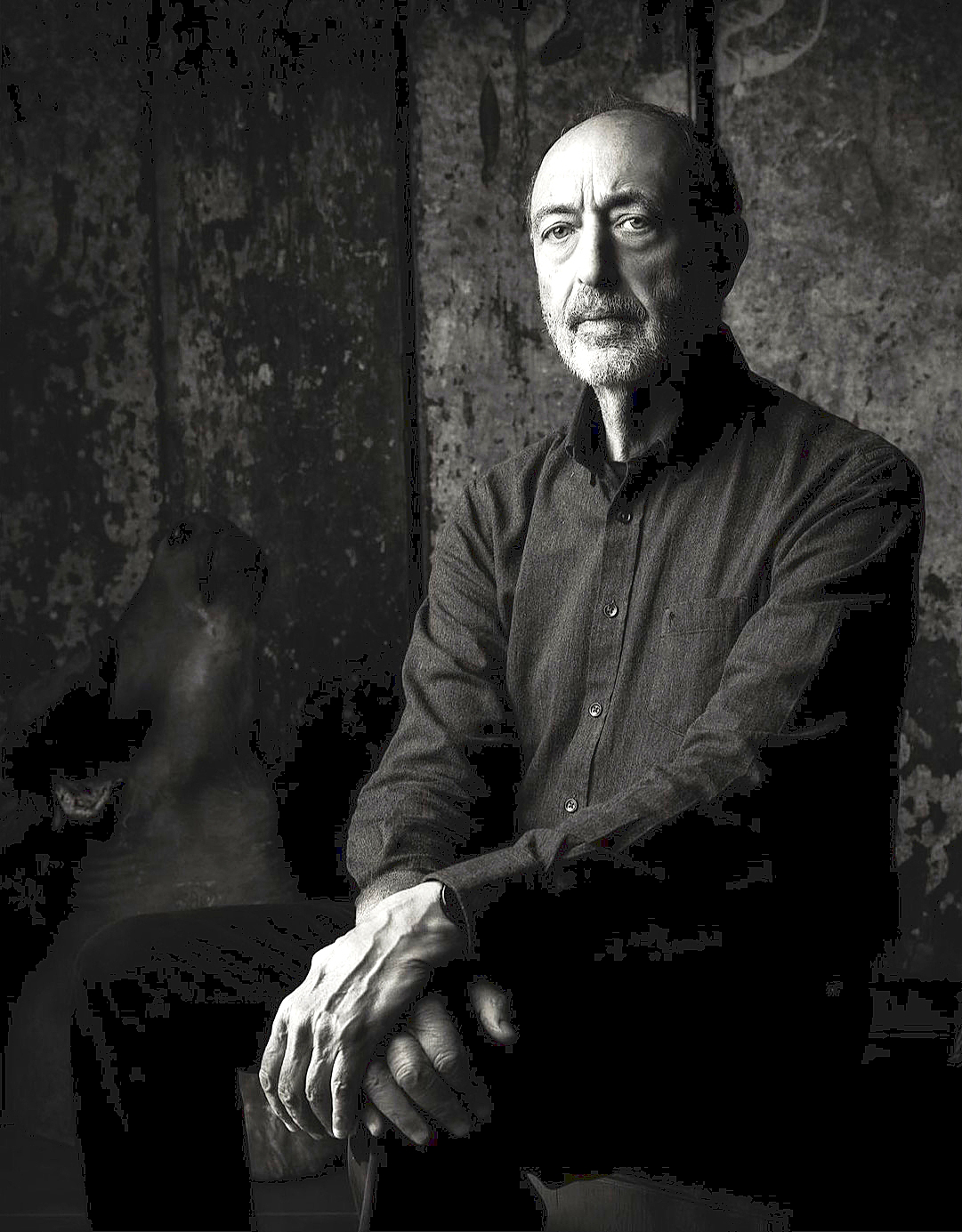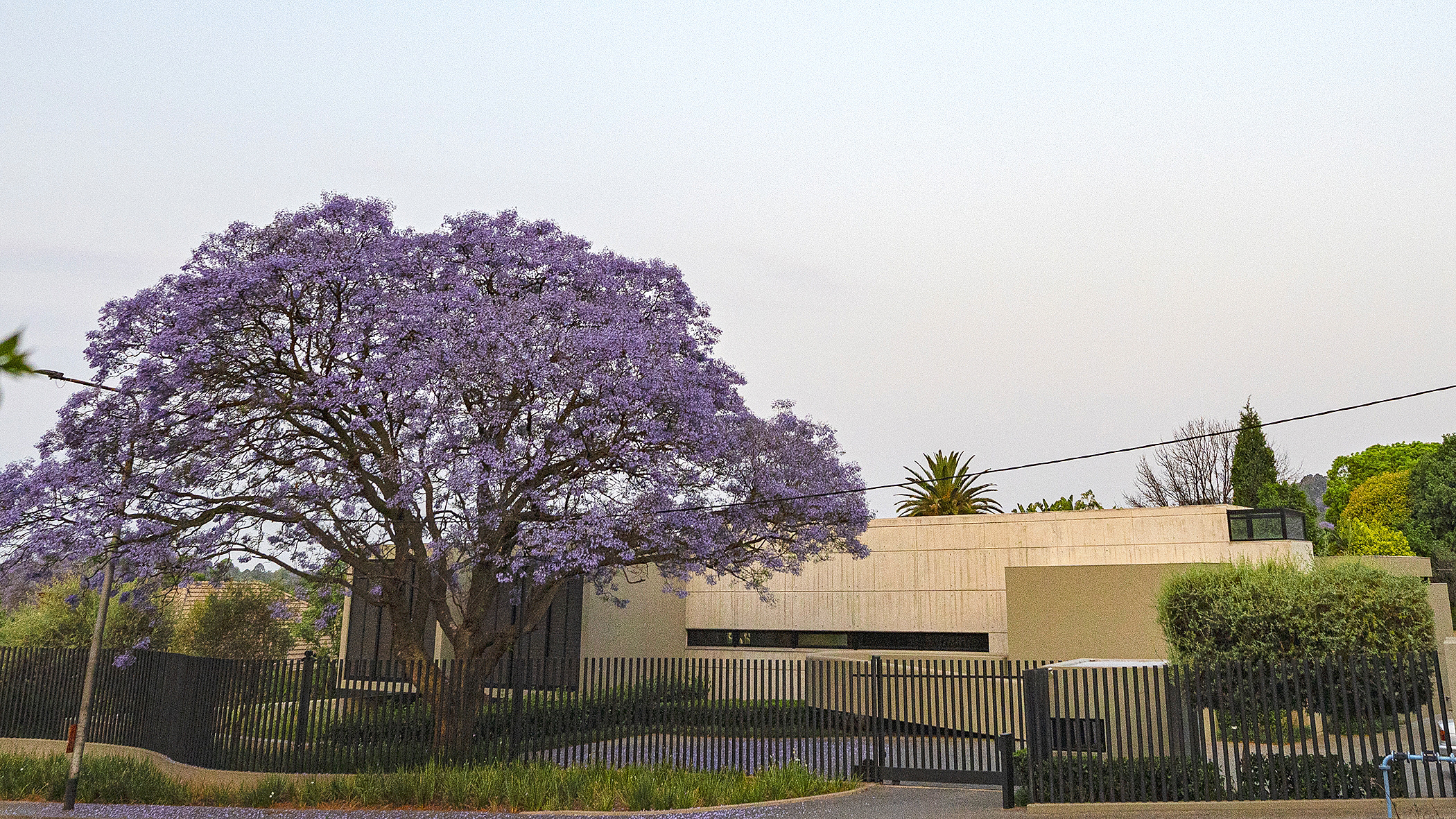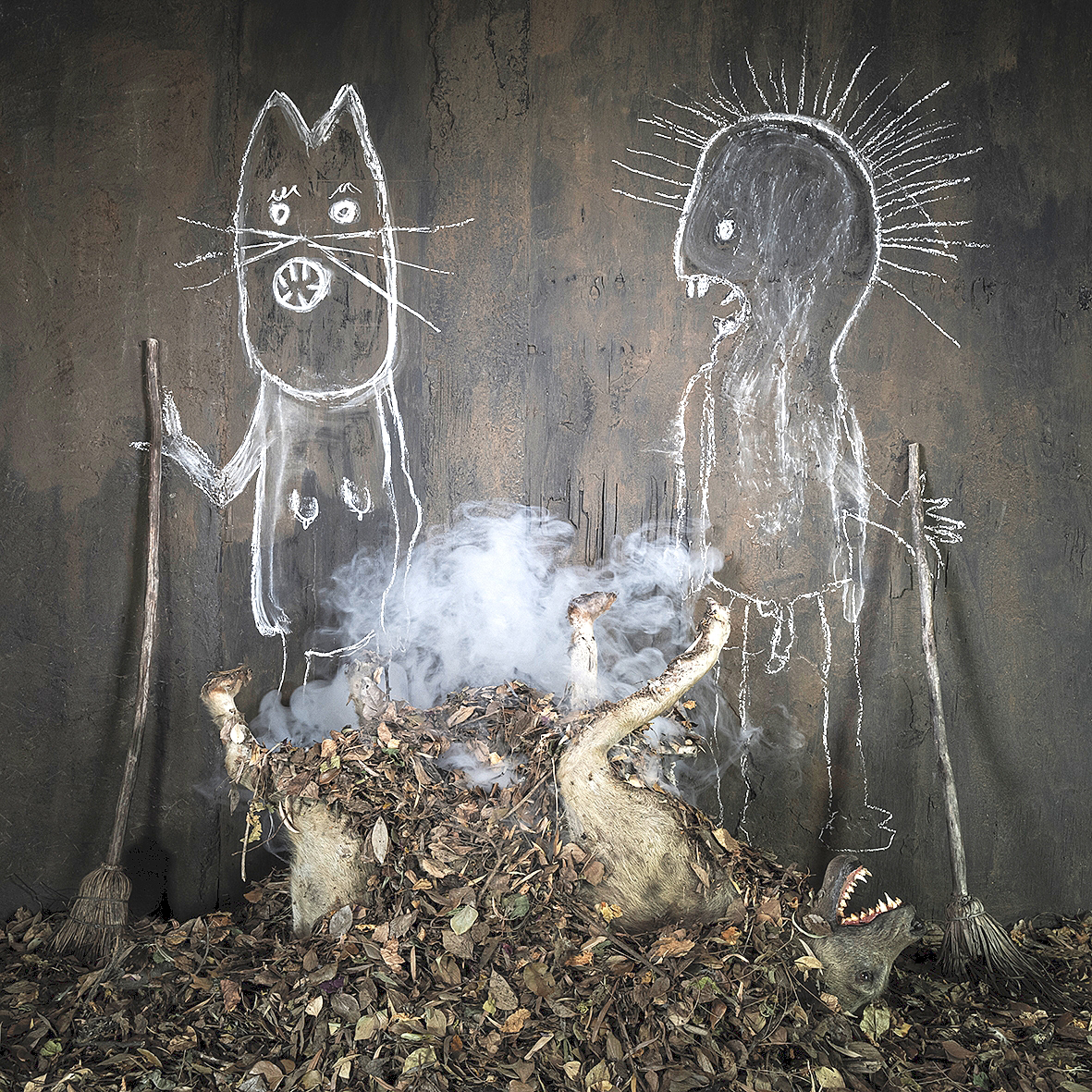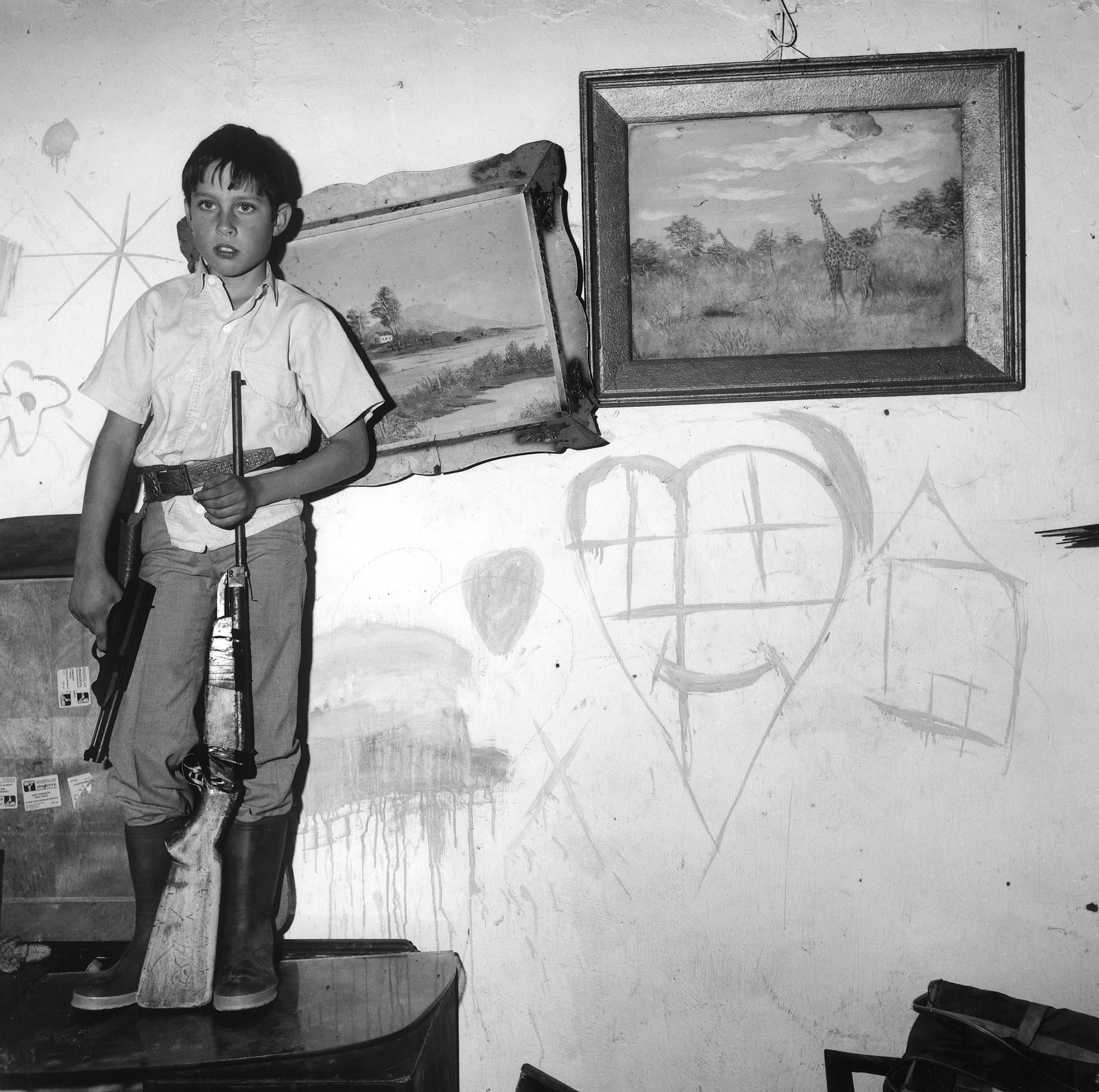
Johannesburg’s cultural landscape was invigorated on March 28 when the Inside Out Centre for the Arts opened to the public. Founded by internationally renowned artist-photographer Roger Ballen, the Inside Out Centre aims to explore issues related to the African continent through exhibitions and educational programs. Antiques and The Arts Weekly corresponded with Ballen to get the inside scoop on this new significant landmark.
How did an American artist end up living and working living in Johannesburg?
In 1973, I embarked on a five-year journey that would take me from Cairo to Cape Town; Istanbul to New Guinea 1973-1978. On this trip, I arrived in South Africa, and met my future wife, Lynda Moross, whom I married in 1980. I enrolled at the Colorado School of Mines in 1978, where I received my PhD in mineral economics in 1981. I permanently settled in Johannesburg in 1982, in order to pursue opportunities in this field.
Did you work with a local or outside architect to create the building?
I worked with Joe van Rooyen from JVR Architects, an architectural firm based in Johannesburg, to design the building. Joe completed his degree at the University of Pretoria and pursued postgraduate studies at New York University for Art and Architecture. JVR Architects specializes in high-end residential design and has deep roots in South African architecture. I regard Joe as an architect with a keen aesthetic sensibility: a real “master” of concrete and light. Both of these elements were crucial in constructing an art viewing space that embodies the Ballenesque aesthetic.

Inside Out Centre building front view with Jacaranda tree.
What factors were considered in its siting?
My intention in building the center was to provide easy access to an arts institution for the residents of Johannesburg. There have been many articles published about the declining state of publicly funded museums in South Africa. Many of our important museums in the Johannesburg inner city have suffered from a lack of funding; as result, there has been infrastructural decay. In addition, many residents feel unsafe to go into these areas because of high rates of crime. For these reasons, the Inside Out Centre was built in a central suburb called Forest Town, on one of the city’s main thoroughfares called Jan Smuts. It forms part of a trio of cultural centers in this vicinity, joining the Joburg Contemporary Art Foundation (JCAF) and the Johannesburg Holocaust and Genocide Centre, which work together to create this regenerated cultural area in the city
What was your inaugural show, and with what African issues did it grapple?
The inaugural show is titled “End of the Game,” after American photographer Peter Beard’s landmark 1965 publication, The End of the Game. The exhibition chronicles the practice of unrestrained hunting, which has resulted in the ecological devastation we are currently facing on the continent. In particular, it attempts to record and highlight the historical significance and context of the “Golden Age” of African hunting safaris by colonialists and powerful Western figureheads — such as Churchill, Theodore Roosevelt, King Edward VIII and Hemingway — which took place from the mid-1800s onwards.
How long has the center been in the making?
The Roger Ballen Foundation, which was dedicated to the advancement of education in photography in South Africa, was established in 2008. The foundation sponsored exhibitions in Johannesburg of notable international artists and brought guest lecturers to students in the city. After some time, I felt that the foundation, which has since been renamed the Inside Out Trust Foundation, needed a home so that shows and programs could run on an ongoing basis. In January 2018, I finally found a property in an ideal location to bring his project to fruition. The Inside Out Centre was built on this piece of land, and I moved into the building in August 2020.

From Endgame, “Bonfire,” 2020 (Roger Ballen).
Describe the primary focus of your foundation.
The foundation supports the Inside Out Centre, the latter of which serves a dual purpose. First, the Inside Out Centre acts as an art exhibition space, presenting shows that explore issues related to the African continent from a distinctively aesthetic and psychological perspective. Second, the Inside Out Centre facilitates a dynamic program of educational talks, panel discussions, masterclasses and presentations that reflect on the current exhibition and on topics relevant to the arts. We will also have special programs for high school groups based on the current exhibition. These include programs for visual and dramatic arts, language studies, social sciences and project-based learning
Inside Out is a compelling name, both for the foundation and the center. What idea does it reflect?
There are three main reasons for the name “Inside Out.” Firstly, the architecture embodies this idea. Raw concrete is used on the interior and exterior surfaces of the building, creating an ambiguity, and a large ramp takes the interior — a breathtaking double-volume space — into the outside world. In fact, at times, the building appears as if it has been turned “inside out.” Secondly, the notion represents the core aim of the Inside Out Centre and the aesthetic of the Ballenesque, which is to encourage introspection, self-analysis and reflection, bringing our deepest fears to the forefront of our psyche so that we can confront them. Thirdly, the notion of “inside-out” also alludes to the quality of absurdism in the work that will be showcased here. It is a place where expectations are subverted, and ordinary ways of seeing are challenged: turned “upside down” and “inside out.”

From Endgame, “Boy with guns, Western Transvaal,” 1993 (Roger Ballen).
What community of artists will you draw upon for programs and exhibitions?
In terms of our audience, our aim is to be as inclusive as possible: we welcome guests from all walks of life. It is important to note that our exhibitions are theme-specific and not artist-specific. However, the following guidelines will inform our curatorial decisions:
1. The topic should directly or indirectly have a relationship to African culture, history or contemporary issues of the continent.
2. Exhibitions should link the documentary with the aesthetic, fact with fiction, and be educational and imaginary at the same time.
3. The work should have a psychological impact that extends beyond what is merely “contemporary.”
4. There should be a link between what is exhibited and the aesthetic of Roger Ballen and the Ballenesque. This includes work related to the artistic movements of Surrealism, Absurdism, art brut and/or outsider art.
Any lessons learned to share following the first couple months of its opening?
We had a very successful opening and, like other events such as these, one has to continually reassess how to promote and engage the project with the general public. In other words, the project does not stop with the opening. It is an ongoing process to develop community involvement. We are still learning about the South African audience and cultivating ways to introduce an artistic experience to many of those in the public who have not been exposed to this field
What is Outland, your 2001 photography book, republished in 2015?
The third edition of Outland was published in 2015 as an expanded version of the previous two, with many new and previously unpublished photographs. In addition, I produced a film titled Roger Ballen’s Outland for the launch of this project. Outland, which was published by Phaidon Press, was a very successful publication, winning numerous photography book awards, and encouraged me to spend more time pursuing photography as a career rather than a hobby.
In Outland, I present a series of black and white images that capture a sense of surrealism and explore themes of human existence, isolation and the boundaries between the conscious and subconscious. The subjects in these photographs often appear in unconventional poses or interact with various found objects or animals, creating a powerful and introspective atmosphere.
—W.A. Demers




